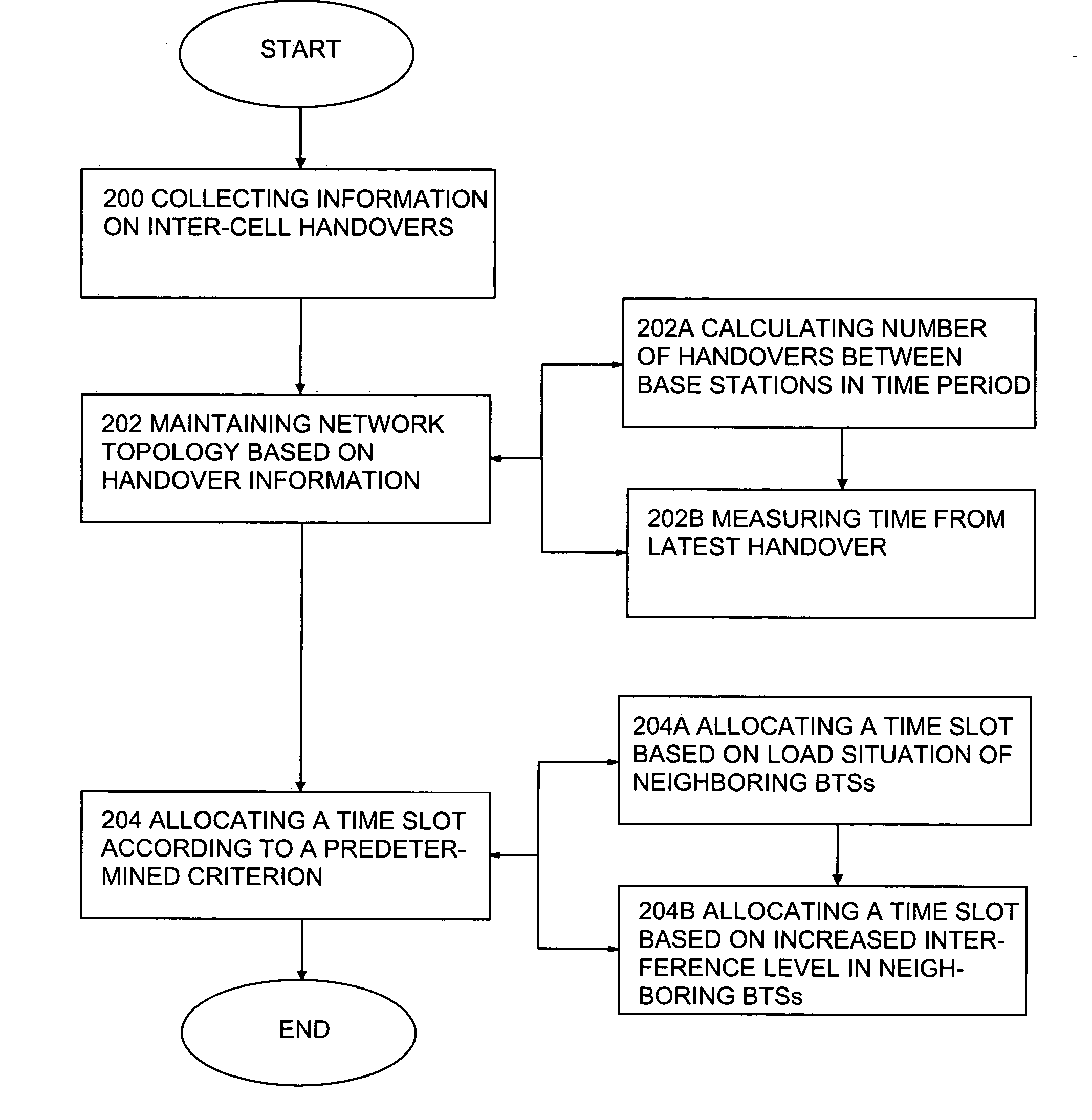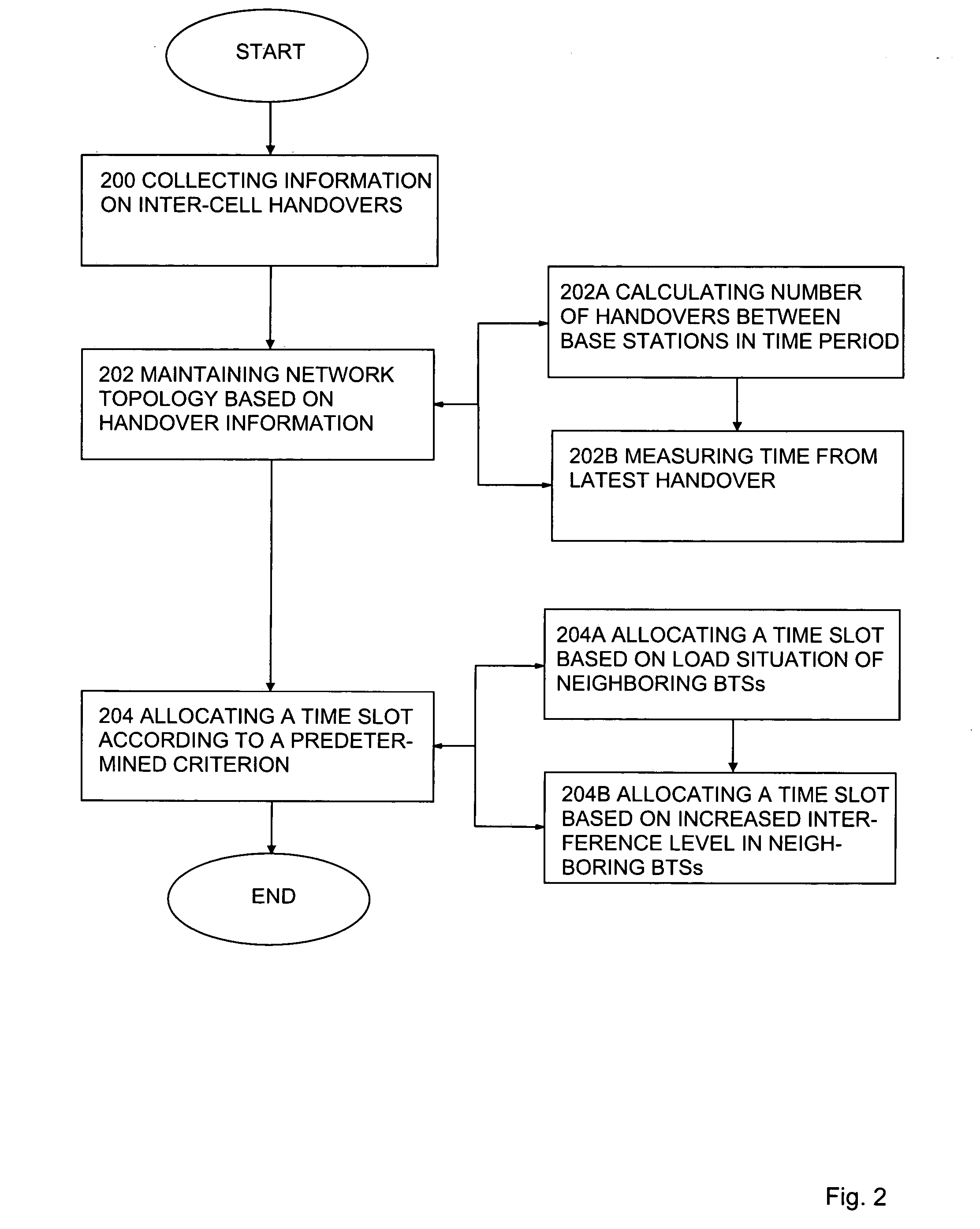Resource allocation in mobile network
- Summary
- Abstract
- Description
- Claims
- Application Information
AI Technical Summary
Benefits of technology
Problems solved by technology
Method used
Image
Examples
Embodiment Construction
[0017]FIG. 1 is a simplified block diagram showing the most important parts of a radio system at network element level and the interfaces between the network elements. The example of FIG. 1 illustrates a radio network comprising parts of a 2 / 2.5-generation GSM (Global System for Mobile communication) and 3.generation UMTS (Universal Mobile Telephony System) networks. Besides the network shown in FIG. 1, the invention can also be used in other radio networks employing TDMA or TD-CDMA. One example of such a network is the Chinese TD-SCDMA (Time Division Synchronized CDMA), which is based on the 3GPP UTRA TDD with narrowband carriers.
[0018] In FIG. 1, the structure and functions of the network elements are not described in detail since they are generally known. The main parts of the shown radio system include a core network (CN) 100, a radio access network (UTRAN) 130 and a user equipment (UE) 170. Radio access network UTRAN 130 belongs to the third generation and is implemented by th...
PUM
 Login to View More
Login to View More Abstract
Description
Claims
Application Information
 Login to View More
Login to View More - R&D
- Intellectual Property
- Life Sciences
- Materials
- Tech Scout
- Unparalleled Data Quality
- Higher Quality Content
- 60% Fewer Hallucinations
Browse by: Latest US Patents, China's latest patents, Technical Efficacy Thesaurus, Application Domain, Technology Topic, Popular Technical Reports.
© 2025 PatSnap. All rights reserved.Legal|Privacy policy|Modern Slavery Act Transparency Statement|Sitemap|About US| Contact US: help@patsnap.com



